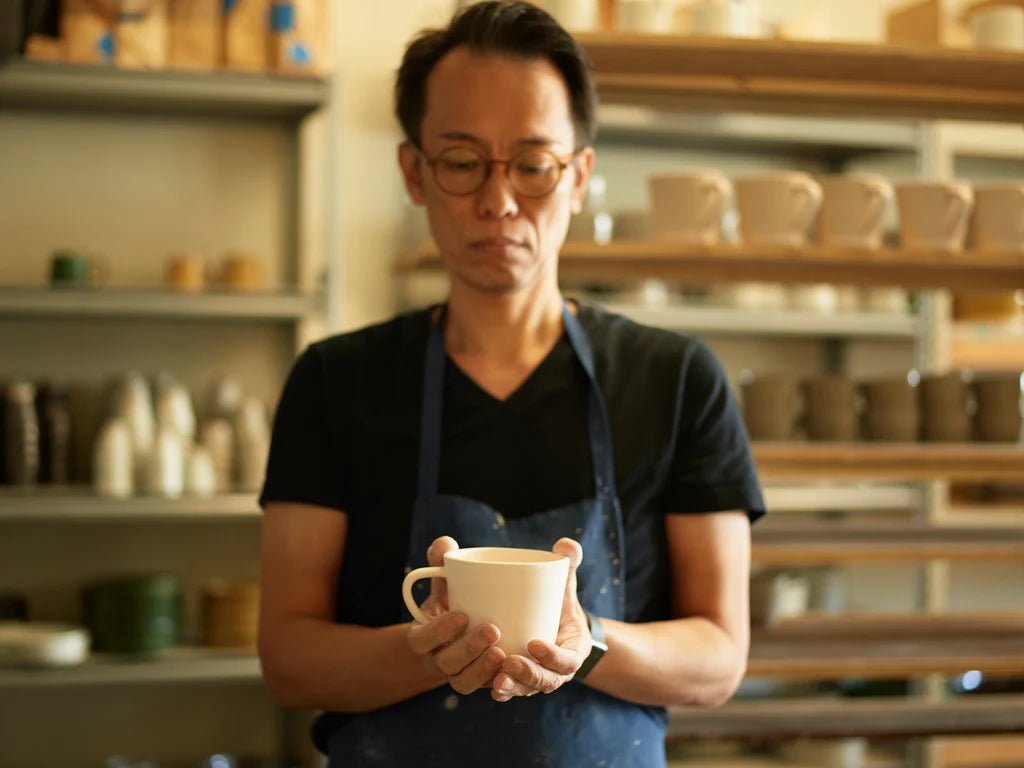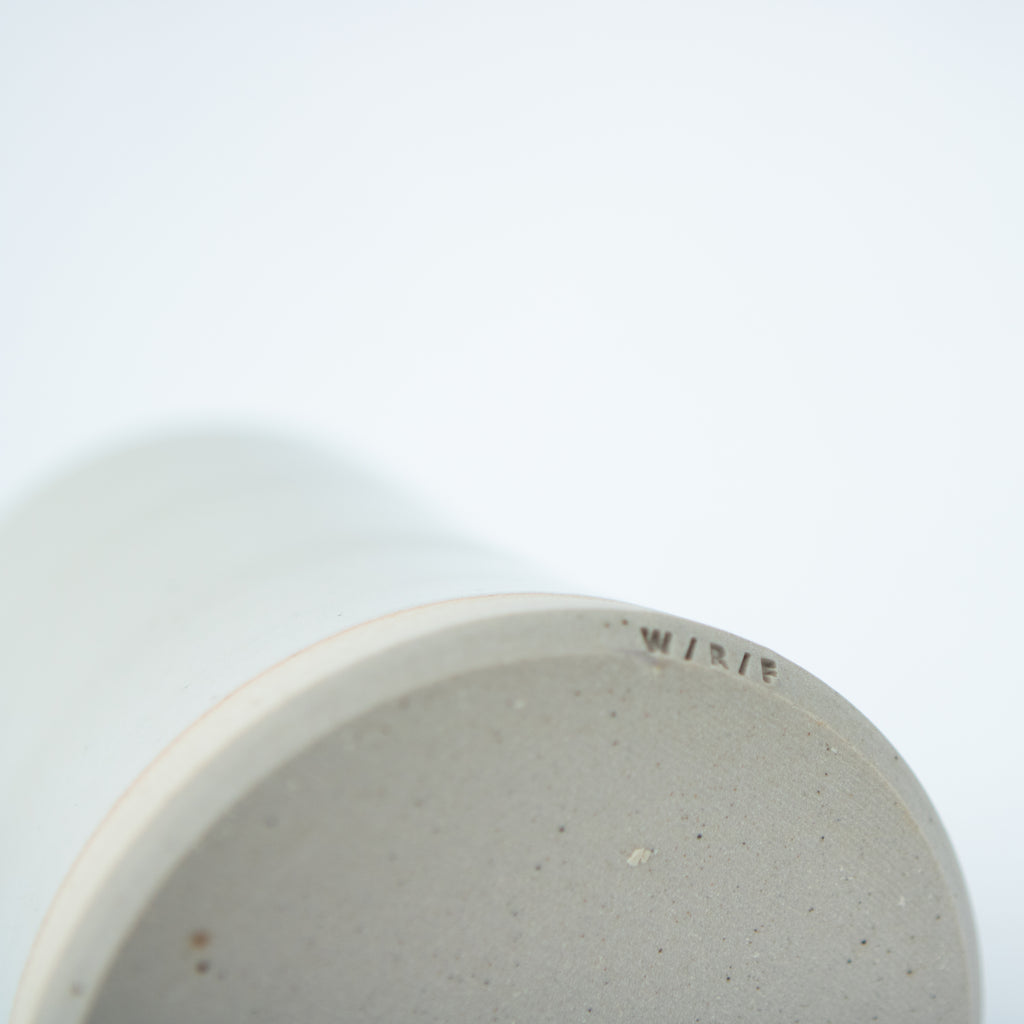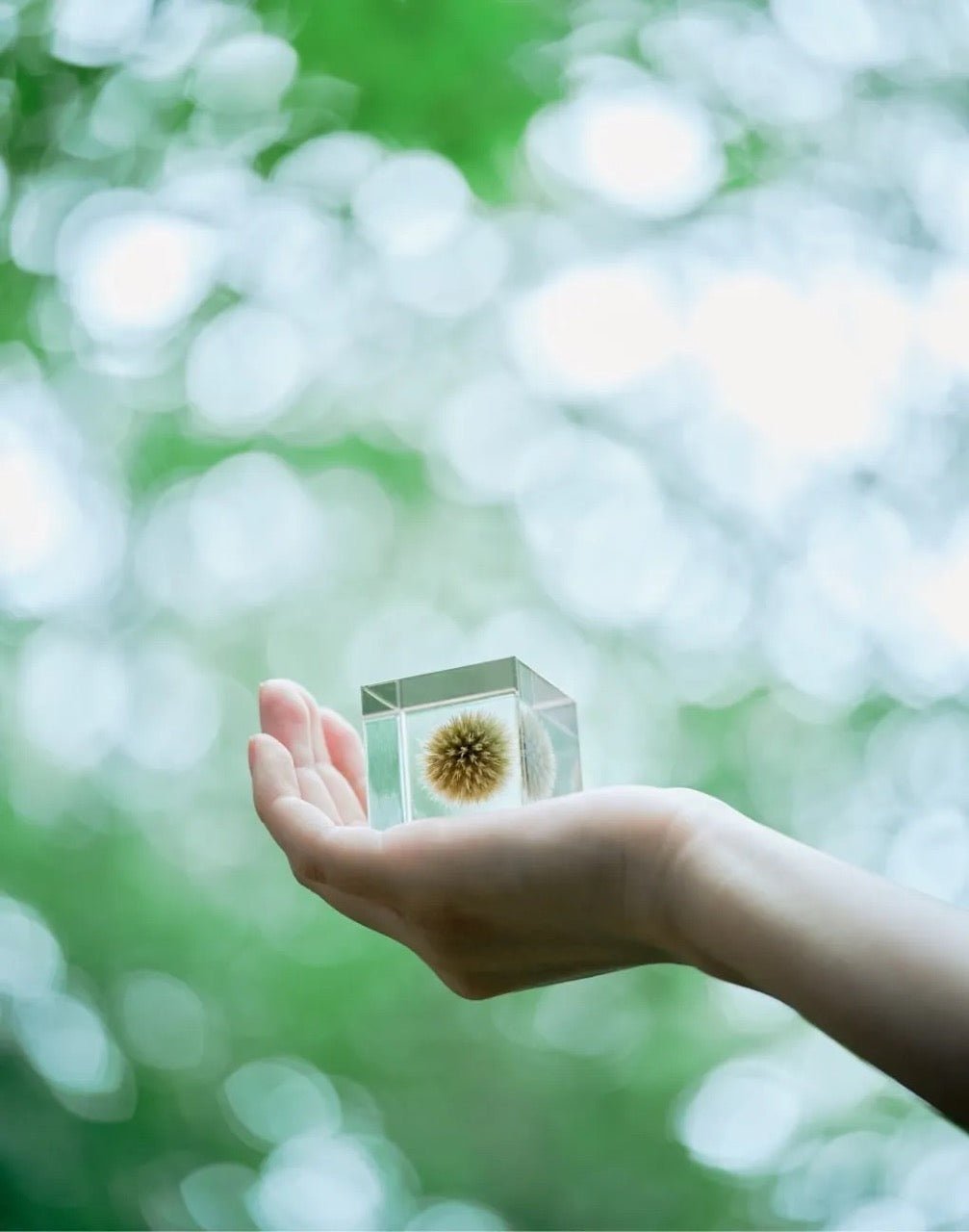WRF, a ceramic line named after the English translation of founder Nobuhito Nishigawara's last name (West River Field), has lined the shelves of Tortoise General Store since 2014. Each piece has a distinctly handmade quality - the soft, simple forms are full of tactile warmth.
When Nishigawara isn't in the studio, he's teaching as the head of the Ceramics Department at California State University, Fullerton. Our staff member Ruby met with Nishigawara to check in about the history of WRF, how Nishigawara's background as a fine art sculptor affects his practice, and advice for new ceramicists.
Ruby Zuckerman: Thank you so much for chatting with us about WRF, Nobu! Do you mind giving us an overview of how you started making ceramic work?
Nobuhito Nishigawara: I’d love to. I originally studied in Canada, where I was trained as a potter in Junior College. I was not directly interested in just making ceramics, but mainly in my instructor who was a Japanese born artist. His name is Sadashi Inuzuka and he is currently a professor at Michigan State University. I was so fortunate to find him and to study with him in Canada. He was a sculptor, making installation work.

Exhibition view of "River" by Sadashi Inuzuka
Coming from Japan, surrounded by lots of active ceramic cities, I was only aware of functional ceramics. Functional, utilitarian pieces. Seeing Sadashi's sculptures, my interest jumped tremendously. I just wanted to know everything about ceramics. So, I was able to practice and finish all of his classes. I wanted to continue my education. I came to the States and studied at the Kansas City Art Institute for four years.
Ceramic sculpture by Nobuhito Nishigawara
During those years, I had to make utilitarian ceramic work as part of the curriculum. But I was more focused on ceramic artwork, and that’s the direct influence of my professor. When I started teaching ceramics, I was mostly teaching sculpture and not very much pottery.
RZ: When did you start making work as WRF and what inspired you to start?
NN: I can’t remember the exact date, but I believe in was in 2014. I was trying to figure out what to give my wife for Mother’s day. I decided to make her a set of dishes. She really loved it, and she encouraged me to continue. That’s how the line of WRF started. Then, I gathered all the original pieces and emailed Mr. Taku [co-owner of Tortoise] to see if he was interested. He bought a bunch of samples, and that’s when WRF really took off.
RZ: That is such a sweet story. Do you find that your training in fine art and sculptural ceramics influences your pottery at all?
NN: Not really. A lot of my career has been devoted to making sculptures. I was at a point where my sculptures were not just objects, but contained an entire conceptual context. I was able to make a lot of work, but at the same time I was running out of ideas. For me, it was pottery - a practice that involves repetitive motion, a focus on simplicity, the simple form - that gave me a place to breathe and really fine tune myself. I really liked it. It was so different from the previous production of sculptures. So, I really jumped in. Since WRF, I’ve spent almost zero time making sculptures. I still teach, but every day right now I’m in the studio making pots.
Exhibition view of sculptures by Nobuhito Nishigawara
RZ: Do you have any guiding principles as a designer? Are you adding more designs all the time or do you mostly stick with the original forms?
NN: I started small. Over the last five years, I’ve added a bunch of colors. Not only colors, but different shapes and items. I like to keep things simple because my production team is very small. I’m always thinking about what to continue, what to discontinue. But not so much of what to add.

RZ: All of your pieces are handmade. There is variation between each one, but also a very remarkable level of similarity. What attracts you to handmade, handcrafted ceramics instead of a more mass produced approach?
NN: The reasons are very simple. I really thought about using high capacity production, and using molds. Injection molds came to mind. However, I feel a value to handmade pieces. I have the skills and training to make everything by hand. Anyone can use molds without training, anyone can do it. You can order a mold off of an original design, and all you have to do is pour clay into the mold. Then, everything is the same. There are plenty of people doing that, and there’s a market for it. But when I was trying to fine tune my project, I came to the conclusion that everything should be made by hand, one by one.
RZ: I love that about the WRF pieces. I feel like it gives them a lot of heart. Are you the sole potter in WRF? Do you have other people that help you?
NN: I have a great staff at my studio. When I started, I was the only one for the first three years. With the help of Tortoise and Mr. Taku and Mrs. Keiko, a lot of people came to Tortoise on Abbot Kinney. I wasn’t promoting myself or my products at all. But it really spread. I couldn’t keep up with the demand doing it myself. So, I hired a couple people part time. Mostly former students of mine. It grew. One time, before the pandemic, I had seven people working for me. As the pandemic began a year ago, I scaled down the production. I still have one very talented, skilled staff member.
RZ: Scaling down the team that was helping you during COVID sounds like a big change. Are there any lessons from this time that you hope to take forward as we (hopefully) move past the pandemic?
NN: I’m really thankful that I’m still able to make my work, have a studio open, and have clients like your store. I don’t have to make a lot of pieces. So, I really value true appreciation of what I do. I’ve learned to really focus on building a better relationship with existing customers. The goal is not to make money. If that happens, of course, that’s great. But that’s not my primary focus. The focus is, do what I know, do the best I can, and appreciate the people who support what I do. Building better relationships and appreciating people. Be thankful for what I can do. That is what I have learned from the pandemic.
RZ: What are your hopes for the future of WRF?
NN: Go back to where it was. My business started as a wholesale and I built great relationships with restaurants and cafes, both nationally and internationally. But unfortunately, these are the businesses hit hardest by this pandemic. They are gone permanently. As a wholesaler, I lost quite a bit of customers. So hopefully, as we end the pandemic, we will reconnect with customers I lost, maybe I will meet new customers as well, and restart a healthier relationship. I want everyone I work with to be happy and stay well. Hopefully, I can support what they do with my dishes.

RZ: Do you have any advice for young ceramicists just starting out or just becoming interested in pottery?
NN: This is something I tell all of my students. Ceramic work is a skill. It’s a fully skilled based practice that can make one of a kind art or pottery. A lot of times we all have great ideas. What we see in our head can be so far away from what we see in front of our eyes, once we’ve created it. It can be so far off. We all get discouraged and disappointed. A lot of people quit because it is so hard.
Sculpture by Nobuhito Nishigawara
Be open minded. You might think it’s bad, but what’s important is to have dual vision. We always focus on seeing what’s bad, but that doesn't mean it’s bad. It has an equal value of positive elements. I really think everything has duality: negative and positive. I tell my students to look for negative elements, but at the same time find the equal amount of positive elements. And neutral. Find out how to improve the positive elements, and minimize the negative elements. I really think that this perspective applies to life in general.
Nobuhito Nishigawara was born and raised in Nagoya, Japan, and traveled to Canada in 1990 to begin his study of ceramics. After completing Junior College in Canada, Nighigawara received a BFA in Ceramics from Kansas City Art Institute and an MFA from Arizona State University.
Nishigawara is currently the head of the ceramics program at California State University, Fullerton. Alongside his career as a professor, his prolific sculptural work has been exhibited across the United States.














